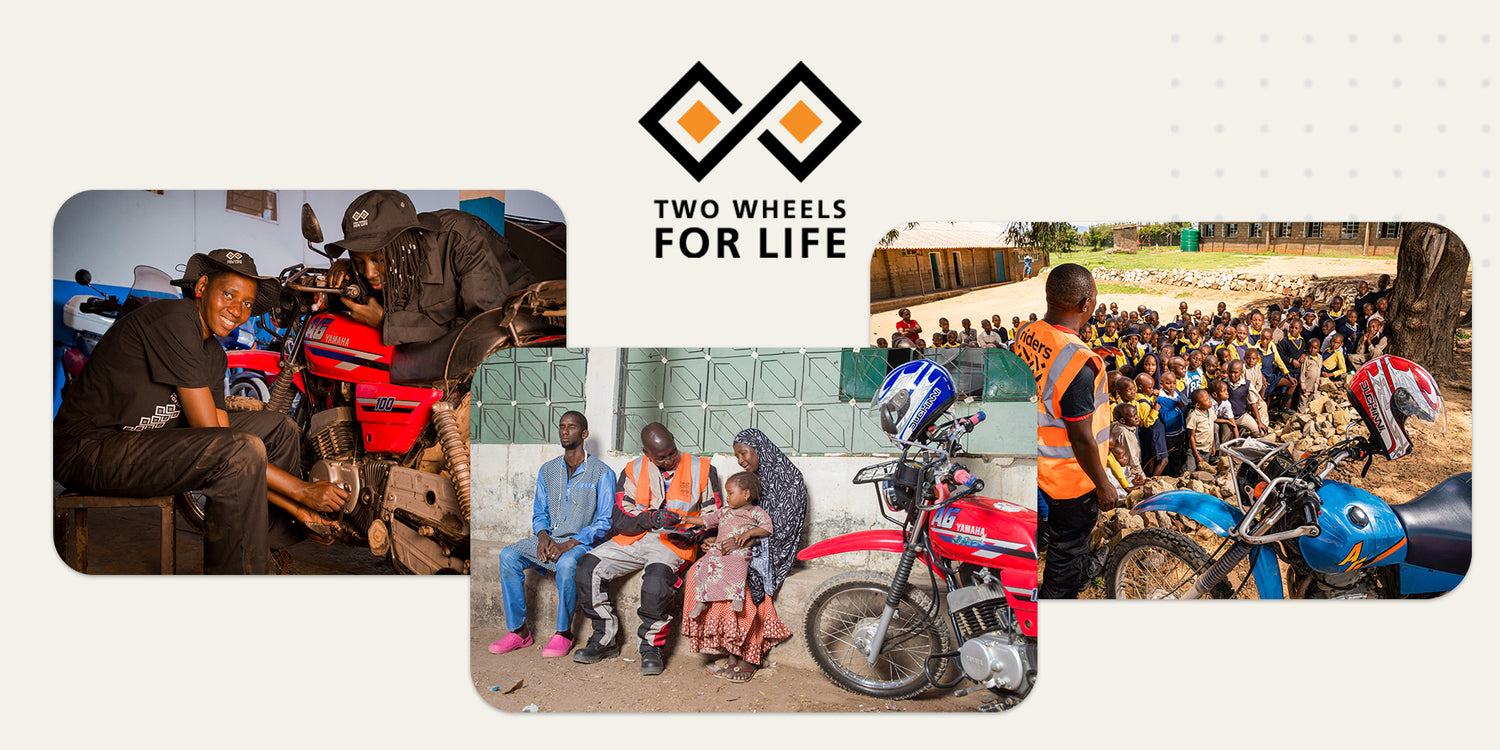Bike lights are vital to cyclist safety, both for being seen and being able to see, as well as being a legal requirement in the UK and many other countries. Here we’re going to break down the types of bike lights available and how to choose the right ones for you.
Types of Bike Lights
One way to categorise bike light types is by their position on the bike. It is a legal requirement to have both a front and rear bike lights and the function of these lights differ so this is a good place to start!
Front Bike Lights
Attached to the front of the bike, front bike lights are usually white in colour and their main function is to help the rider see the way in front of them. For this reason they are normally more powerful than rear bike lights. Bike lights that help you to see are called “see lights.”
Rear Bike Lights
Attached to the back of the bike, rear bike lights are normally red in colour and act as a way of helping the rider be seen by other vehicles and cyclists. These kind of lights are called “be seen lights.”
Wearable Bike Lights
Usually attached with a clip, wearable lights can be fixed to any part of the rider to help increase how well they can be seen by motorists. These are another form of “be seen lights”. The most common wearable bike light is one attached to the helmet, these have the extra benefit of enabling the rider to see in their line of vision more clearly, as well as allowing other vehicles to make out their head movements clearly.
Side Bike Lights
An extra type of safety light, attached either to the rider or the bike itself, side bike lights help cyclists be seen from all angles. These are particularly useful for people who have front lights with a very directional beam rather than 180 degree visibility.
Bike Light Modes
Most bike lights will have the option to change modes. This can be really helpful if you cycle in different environments and throughout the seasons.
Levels of Lumen
The level of brightness in a bike light is measured in lumen, with the higher the lumen, the higher the brightness. Whilst it can seem tempting to just grab the highest lumen bike light, this is actually potentially dangerous in the wrong situations.
20-100 lumens is usually enough to be seen for rear bike lights on urban cycling routes that are well lit. Whereas a minimum of 100 lumens should be used on the front bike light on well lit routes, with 300+ lumens being better for those wanting to see further ahead of them.
For unlit routes a much higher level of lumens is needed in the front bike light to ensure clear vision of the way ahead. 700 lumens is the minimum level you should use if you’re venturing down unlit paths and country roads but for really uneven routes and off-road cycling anything above 1,000 lumens is a good idea to help you avoid unexpected bumps, potholes or wildlife.
Using a bike light that is too bright runs the risk of dazzling other motorists and cyclists, potentially leading to serious collisions.
Flashing Bike Lights
A popular setting on bike lights, flashing lights help add to a cyclists visibility, particularly when paired with high vis clothing. Having a light on flash mode also uses up less battery so is often favoured by people wanting to conserve energy.
It’s worth noting that some motorists have reported that flashing lights make it hard for them to make out how far away the cyclist is. For this reason it is usually a good idea to have a flashing light as an addition to a light that’s on a steady constant.
Types of Mount for Bike Lights
Bike lights can be fitted in two main ways; by straps or bands, or with a clamp. Wearable bike lights are normally fitted onto your clothing with a clip on system.
Straps and bands are usually best for less heavy bike lights, like the ones you would find on the back or side of the bike. They are also generally easier and quicker to remove than a clamp system so make a good choice for commuters who want to lock up their bike speedily and don’t want to be weighed down by heavy equipment on their journey or at work.
Clamps tend to be for heavier bike lights like the ones you would most likely find at the front of a bike. This is because they can handle more weight and offer a more stable and strong connection to the bike. For this reason they are also a good choice for those who enjoy off-road cycling or mountain biking as they stay secure even on rough and uneven terrain.
Power Sources of Bike Lights
While a few bike lights still exist that are powered by disposable alkaline batteries, they are few and far between now. The majority of bike lights are now powered by rechargeable lithium ion/polymer batteries. The advantage of these are that they are generally lighter, more powerful and smaller than their disposable counterparts, not to mention the fact that they lose power a lot slower than alkaline batteries so are more reliable for longer journeys. Modern rechargeable bike lights can often be charged via USB cable, making them even more convenient, though larger bike lights will still need to be connected to the mains to get a speedier charge.
An even more eco friendly alternative is a dynamo light, which is powered by the forward motion of the cyclist. These bike lights have (an unfair) reputation for being clunky and unreliable, based on their original design that appeared after World War I. Nowadays the dynamo light is a popular choice for those seeking a powerful and reliable light that doesn’t need constant recharging. Dynamos are also extremely difficult to steal as they’re bolted onto the front wheel. All of which make them a good choice for bikepackers and cycle tourists who rely on their bike lights and don’t often have access to electricity.
Regardless of the power source, it’s always a good idea to carry back up bike lights with you in case your light runs out of battery. Bike lights tend to suddenly turn off rather than slowly powering down so, unless you have a bike light with a battery indicator, there’ll be no indication that you’re about to be plunged into darkness!
Looking for more cycling tips, stories and inspiration? Take a look at the rest of our blog.





